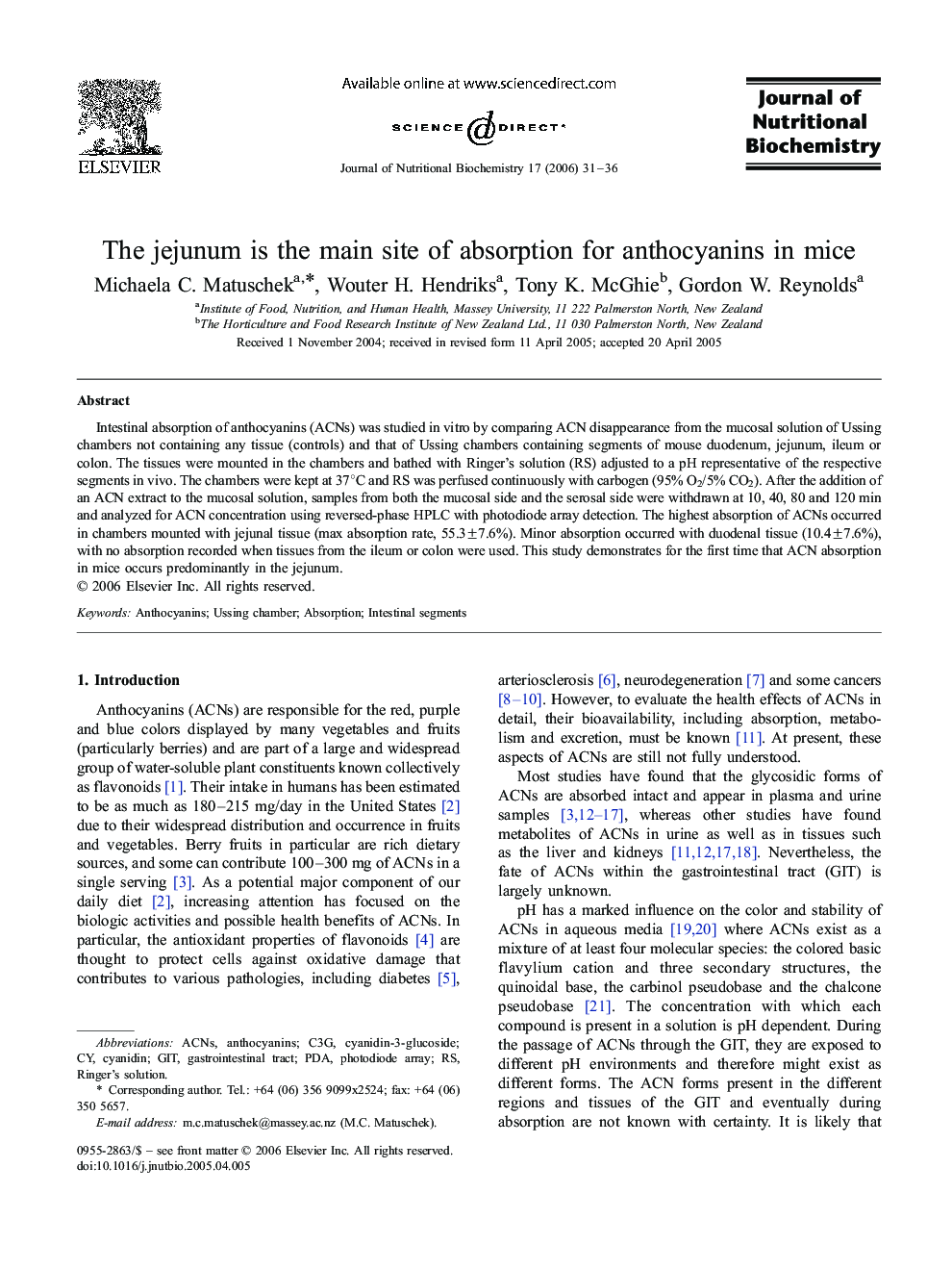| Article ID | Journal | Published Year | Pages | File Type |
|---|---|---|---|---|
| 1990980 | The Journal of Nutritional Biochemistry | 2006 | 6 Pages |
Intestinal absorption of anthocyanins (ACNs) was studied in vitro by comparing ACN disappearance from the mucosal solution of Ussing chambers not containing any tissue (controls) and that of Ussing chambers containing segments of mouse duodenum, jejunum, ileum or colon. The tissues were mounted in the chambers and bathed with Ringer's solution (RS) adjusted to a pH representative of the respective segments in vivo. The chambers were kept at 37°C and RS was perfused continuously with carbogen (95% O2/5% CO2). After the addition of an ACN extract to the mucosal solution, samples from both the mucosal side and the serosal side were withdrawn at 10, 40, 80 and 120 min and analyzed for ACN concentration using reversed-phase HPLC with photodiode array detection. The highest absorption of ACNs occurred in chambers mounted with jejunal tissue (max absorption rate, 55.3±7.6%). Minor absorption occurred with duodenal tissue (10.4±7.6%), with no absorption recorded when tissues from the ileum or colon were used. This study demonstrates for the first time that ACN absorption in mice occurs predominantly in the jejunum.
